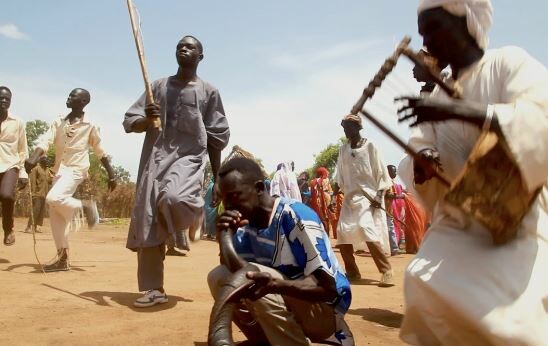The pluralism and diversity of communities in Sudan’s Blue Nile region have enriched its cultural landscape, with traditions deeply rooted in the land, alongside social beliefs and customs shaping the community’s identity.
Among these traditions, the Gada’a Al-Nar, or Harvest Festival, dominates the cultural and folkloric scene with its rituals. It is worth noting that these celebrations began in October last year and will end in December this year.
Recognizing the importance of disseminating and documenting heritage, preserving cultural rights, and ensuring the continuation of cultural practices for future generations, the Bridge of Peace Association in Al-Damazin launched a book documenting the Harvest Festival as part of its project aimed at strengthening social bonds.
This project began last November with a training workshop for the participating teams in this documentation effort.
In a statement to Radio Tamazuj, Saif Al-Nasr, the Director of the Bridge of Peace Association, explained that the 113 paged book, titled ‘Rituals of the Harvest Festival in the Blue Nile Region’ is a significant project documenting several communities in the Blue Nile. It chronicles rituals associated with the harvest season which are celebrated across the entire region.
“Despite their linguistic, tribal, and geographic differences, these communities are united by the celebrations and moral values embodied in this tradition,” he explained.
Al-Nasr clarified that the book covered the cultures of eight communities and has been distributed to relevant institutions and individuals.
Meanwhile, Rahiel Mohammed Khair, a teacher, and member of one of the documented communities, highlighted the achievements that the book will contribute to, including cohesion, love, communication, as well as heritage preservation, and resolving modern ethnic disputes.
He noted that the Gada’a Al-Nar tradition has not received sufficient attention, stressing its positive social benefits.
“Approximately 90 percent of the communities in the Blue Nile region practice the Gada’a Al-Nar tradition which is inherently good and beneficial,” he stated. “For example, it preserves the heritage of Blue Nile communities and fosters unity among all tribes.”
To preserve this tradition, Khair called on all supporting entities and organizations to exert more effort, emphasizing that support should encompass all cultures in the region.
On his part, Engineer Mohammed Ramadan, a researcher interested in Al-Angassana heritage, considered the documentation of the festival an important step, representing a starting point for research and writing about the rituals and heritage of the early communities.
“Anyone interested in researching the Al-Angasana tribe’s heritage will find that this book will provide preliminary information,” he enlightened. “The book has piqued the curiosity and interest of many researchers in documenting customs and beliefs that are expected to disappear if not preserved and documented.”
Ramadan emphasized the significant benefit of the book, especially in strengthening the relationship between the specific community and the activists who have shown interest in the documentation process, which, in turn, will contribute to the existence of these communities.




